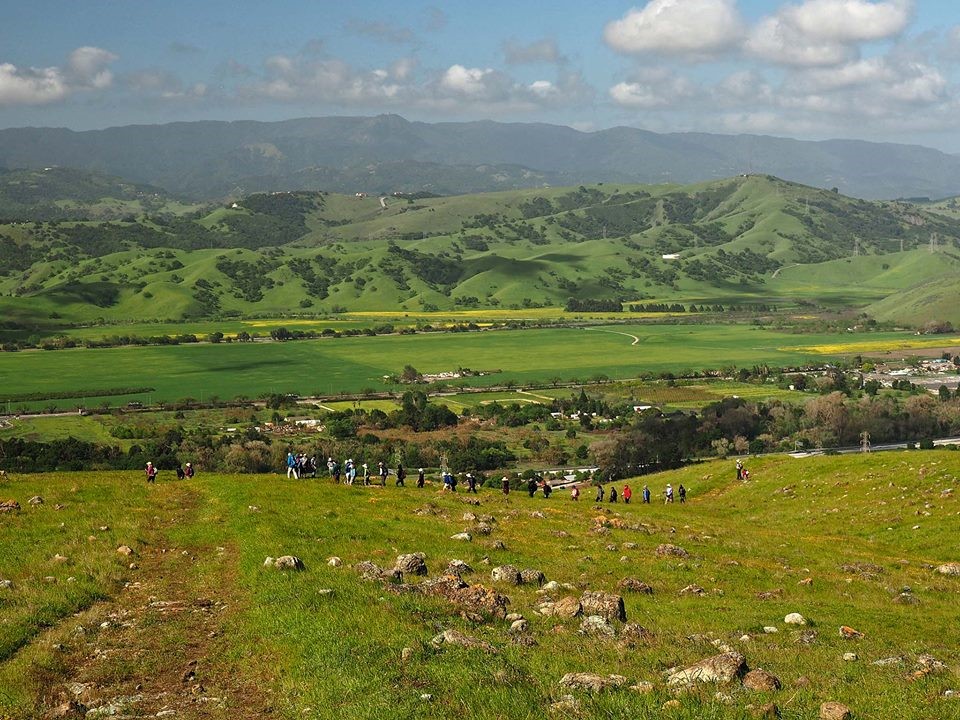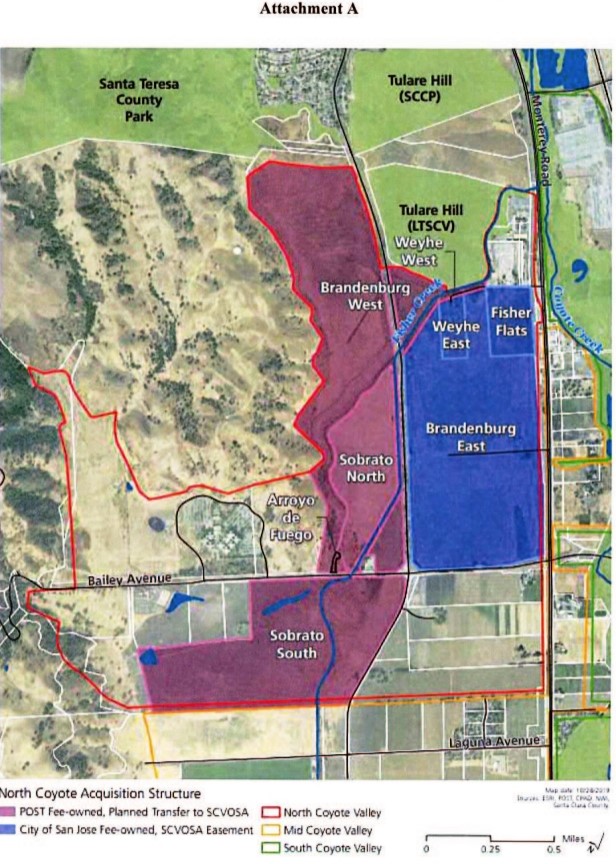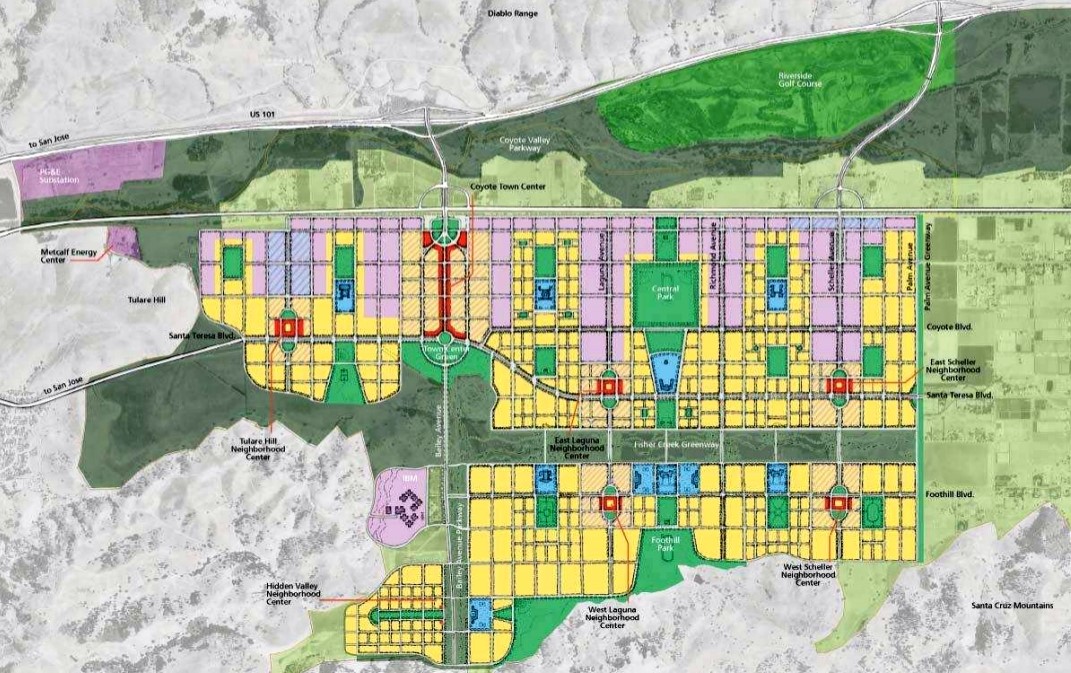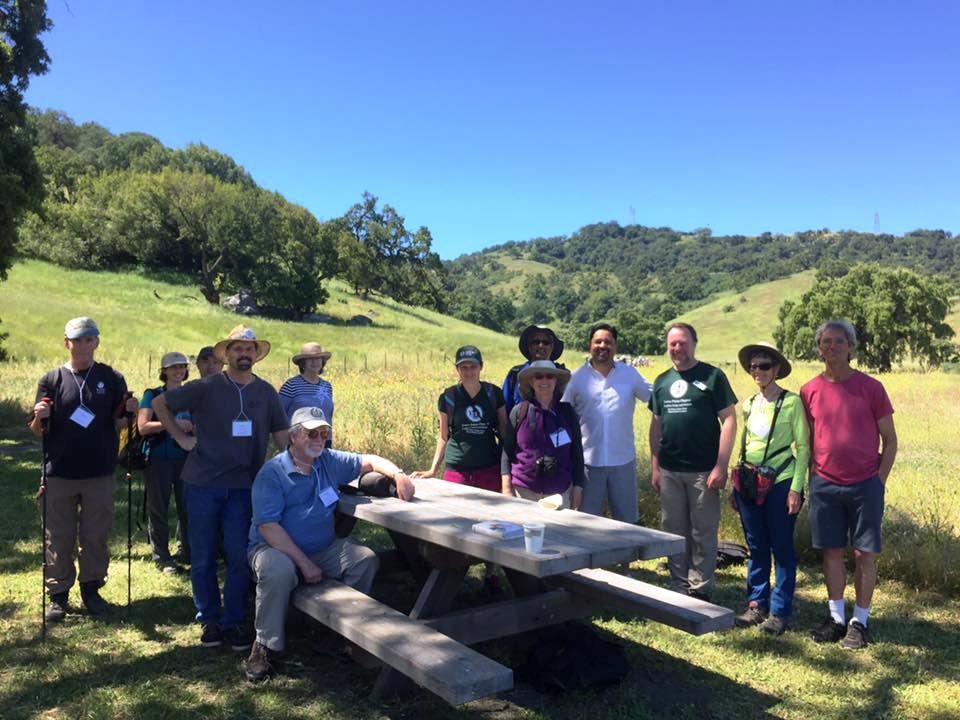by Dave Poeschel
Loma Prieta Chapter Open Space Committee Chair
 When the San Jose City Council voted unanimously to commit their half of the funds along with Peninsula Open Space Trust needed to purchase 937 acres of valley floor land in Coyote Valley for conservation, Wednesday afternoon, November 6, 2019, it was no surprise to those of us intimately involved in the advocacy effort for protection of the valley. Yet we were still astonished with a feeling of disbelief.
When the San Jose City Council voted unanimously to commit their half of the funds along with Peninsula Open Space Trust needed to purchase 937 acres of valley floor land in Coyote Valley for conservation, Wednesday afternoon, November 6, 2019, it was no surprise to those of us intimately involved in the advocacy effort for protection of the valley. Yet we were still astonished with a feeling of disbelief.
For many of us, sitting in the audience after each giving our 2-minute public comments, it had been decades of 2-minute comments. It had been decades of service on committees, campaign phone calls, and various activities directly and indirectly related to the conservation of the natural resources of Coyote Valley.

We knew this day was coming when voters passed Measure T last November 2018, which included $50 million for this purpose. Such a simple thing after all these years. Measure T is a bond measure crafted by Mayor Liccardo and his San Jose City Council colleagues to repair infrastructure including emergency 911 services, bridges, roads, and "natural" flood control of the Coyote Watershed in Coyote Valley.
Clearly, the $100 million in damage by the Coyote Creek flooding of 2017 was a factor.
Sierra Club and other environmentalists had previously defeated a warehouse/distribution center proposal in the valley. We reviewed and commented on environmental documents and stirred up large crowds at community meetings. We had also sat down with the proponents of another project and helped to convince them to build their project elsewhere in San Jose. And our political experience and contributions of shoe leather delivering our message to protect open space to thousands of doors had just a few months earlier led to success at the ballot box against the deceptive Evergreen Senior Homes initiative Measure B. No doubt with our help, the clear support for protecting open space by voters had been a factor in crafting a Measure T that would pass muster.
When Measure T was proposed, we "put the band back together" and did it again.
But it was a much longer and broader road to protect open space that sustained the verdant valley through decades of proposals and turns of the economy. When Cisco wanted to build a 20,000 person campus in the year 2000, Sierra Club Loma Prieta Chapter and Santa Clara Valley Audubon Society filed a lawsuit. Oakland Councilmember Dan Kalb, then our Chapter Direct said at the time, "Tens of thousands of new cars driven by Cisco employees are going to increase the gridlock every day. San Jose and Cisco have not demonstrated that the Coyote Valley campus is the least damaging alternative. An urban, downtown campus, closer to transit, would be better in almost every way imaginable." While this argument lost in court at the time, it has won today with our State Legislature and our City Council. And this delay had staved off development until a poor economy changed Cisco's mind. Today, Google is building a downtown urban transit-oriented campus. The State Legislature passed rules to minimize Vehicle Miles Travel (VMT).
And with a little push from our members, Assemblymember Kalra's AB948 became law declaring Coyote Valley an area of statewide significance for conservation.
Years before, there had also been a signature-gathering effort for a ballot measure in hopes of preventing development. The disputed measure was settled out of the voters' hands but resulted in funding for a measure designed to provide Santa Clara Valley Open Space Authority additional funding. But then after passage, the measure got overturned at the State Supreme Court over the way the vote by mail had been conducted -- just one of many hiccups in the decades of trials and tribulations.

When development of Coyote Valley looked inevitable our Sierra Club Political Committee Chair Melissa Hippard was there investing countless hours on the City's "Site Specific Plan" task force to ensure that at least any build-out would be mitigated as best possible. No doubt Melissa is pleased that this plan sat on a shelf and can now be turned into cardboard boxes.
Meanwhile, the Open Space Authority and its volunteer advocates, many Sierra Club members, persisted and passed Measure Q which proved to be a game-changer for the public agency. A staff well versed in science was ramped up, focused on Coyote Valley, and documented the ecosystem services that the valley provides to the City of San Jose, including natural flood control, aquifer recharge, wildlife habitat, and wildlife linkage between the Santa Cruz Mountains and Diablo Range.
Of course, this all was preceded by the work of other dedicated individuals. A Santa Clara County Open Space Preservation Task Force in 1987 had recommended the establishment of an open space district. Sierra Club and other environmental organizations had worked through a Greenbelt Coalition to advocate for the goals of the task force.
As recommended, the Santa Clara Valley Open Space Authority got established by the State Legislature in 1993 and did receive support for funding from voters after falling just short on a first attempt.
Through these ups and downs over Coyote Valley itself, the Authority matured under the strategic and tactical genius of General Manager Andrea Mackenzie into a source of natural science, respected for its expertise on the natural infrastructure that Coyote Valley provides to the million residents of San Jose.
On this foundation, our allies at Committee for Green Foothills built the "Protect Coyote Valley" campaign along with Sierra Club Loma Prieta Chapter and many other environmental organizations. And with broad public support, the momentum to make secure what had been tenuous for decades, the conservation of Coyote Valley in perpetuity stands along with the Save the Bay movement and protection of the last giant redwoods as one of the most significant victories for the environment in California history.

San Jose Citycouncilmember Sergio Jimenez (fourth from right) joined Loma Prieta Chapter supporters in Coyote Valley Open Space Preserve, with Chapter Director James Eggers (third from right) and Dave Poeschel (fourth from left).